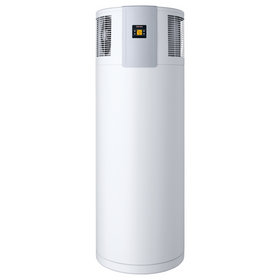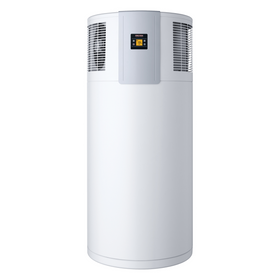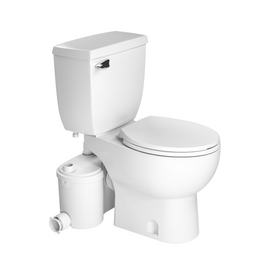
NGBS Green Certification
Last Updated: Mar 10, 2025The National Green Building Standard Certification (commonly known as NGBS Green) is a building certification program aimed at residential structures - both existing and new construction. NGBS Green is the only residential green building certification approved by the American National Standards Institute (ANSI). This fact sets it apart from other certification programs as an American National Standard. NGBS Green aims to ensure that buildings are designed, built, and occupied sustainably.
Table of Contents
- What Is NGBS Certification?
- What Are the Benefits of NGBS Certification?
- How Does NGBS Compare to Other Certifications?
- What is NGBS Certification’s Main Areas of Focus?
- What NGBS Green+ Badges Can Projects Obtain?
- What Types of Homes Can Get Certified with NGBS?
- How Many Homes Have Been Certified with NGBS?
- Has NGBS Certification Undergone Updates?
- What Are the Steps to NGBS Certification?
- How Much Does NGBS Certification Cost?
- What is the Projected Value of NGBS Certification?

What Is NGBS Certification?
This certification program was officially launched in 2009 and is provided by the Home Innovation Research Labs, an independent research and testing organization. A building can be certified to one of five levels: Certified, Bronze, Silver, Gold, or Emerald. The Emerald-level certification is the highest achieving level of all. All levels of certification aim to go beyond traditional building codes.
What Are the Benefits of NGBS Certification?
The benefits of an NGBS Certification are more than checking boxes on a checklist and receiving a certificate. An NGBS Green Certified building will be healthier to live in and less expensive to operate than a traditional building. It should contribute to reducing the environmental impact of the built environment.
This certification will ensure that a home provides fresh air, limits moisture problems, and reduces indoor air pollutants. These healthy home design features will help to ensure the health of those living in the building.
Energy performance is a vital consideration of the NGBS Green Certification. This certification promotes attainable energy and water-saving technologies to address energy efficiency—after all, the more efficient the home, the smaller the operational costs. NGBS Green Certified homes aim to be 20% - 30% more efficient than conventional homes.

How Does NGBS Compare to Other Certifications?
There are a number of green home certifications to choose from, including NGBS Green, LEED for Homes, ENERGY STAR, and the HERS index. Depending on your home's specifications and the elements of sustainability you value most, you may choose one certification over another.
NGBS Green and LEED for Homes are considered by many to be the most comprehensive of home certifications. As a rating system, these two programs are quite comparable when you break down the various criteria and points awarded. However, in most cases, the NGBS Green certification is more affordable and provides a more flexible certification process. In addition, to achieve a higher rating, such as the highest Emerald rating, you must receive high points in all six main certification categories. Likewise, to achieve LEED Platinum, you need a certain number of points overall, but these can come from any category. Theoretically, this fact means that a home can receive LEED Platinum because of its strong energy performance. Still, it may be weak in terms of another category like water efficiency. A critical criterion that LEED requires that NGBS Green does not, however, is mandatory site testing post-construction to prove that the building is, in fact, performing as intended. While this is not a requirement with NGBS Green, we highly recommend that you budget for this if you choose NGBS Green for your home.
Curious to learn more about how the NGBS Green Certification compares to other green home certifications like LEED for Homes and ENERGY STAR? Home Innovation Research Labs provides a series of reports and comparisons, found here.

What is NGBS Certification’s Main Areas of Focus?
For a building to achieve certification, it must implement green practices in each of the following six categories:
- Lot and site development
- Resource efficiency
- Energy efficiency
- Water efficiency
- Indoor environmental quality
- Homeowner education
In addition to achieving a certification that focuses on these six categories, a project can achieve “NGBS Green+ Badges.” These badges feature design elements that go above and beyond the certification’s standard requirements and are available for existing and new construction projects.

What NGBS Green+ Badges Can Projects Obtain?
The available NGBS Green+ Badges are related to:
- Net-zero energy
- Resilience
- Smart home
- Universal design
- Wellness
- Zero water

What Types of Homes Can Get Certified with NGBS?
The following types of homes can be certified under this program:
- Single-family homes
- Townhouses
- Apartment buildings (with low- and high-rise)
- Duplexes, quads, and garden apartments
- Multi-unit buildings including assisted living facilities, group homes, and dorms
- The residential portion of mixed-use buildings
- Residential rehabilitation projects (example: converting a commercial space into a residential building)
- Residential remodeling projects (kitchens, bathrooms, etc.)
Essentially any structure that is used for living and sleeping can be NGBS Green Certified. Even accessory dwelling units (such as clubhouses) can be certified. However, it is important to note that the residential portion must be 50% or more to be eligible for certification for mixed-use buildings.
How Many Homes Have Been Certified with NGBS?
To date, over 265,000 homes have been NGBS Green Certified, and about 150,000 buildings are registered to seek certification. Residential structures have been certified in almost every single state in America.
Shop All Special Offers
Shop Special Offers on vetted Home Improvement products at low prices while supplies last.

Stiebel Eltron Accelera 300 E Heat Pump Water Heater
Stiebel Eltron
Out of Stock

Victory Range Hoods Sunset 600 CFM White Flush Ceiling Mount Dimmable LED Range Hood
Victory Range Hoods
In Stock

Victory Range Hoods Sunset 600 CFM Flush Ceiling Mount Dimmable LED Range Hood
Victory Range Hoods
In Stock

Stiebel Eltron Accelera 220 E Heat Pump Water Heater
Stiebel Eltron
In Stock

Quickscrews Cabinet Install Screws
Quickscrews
In Stock

Victory Range Hoods Horizon Matte White Flush Ceiling Mount Range Hood with Dimmable LED Lights
Victory Range Hoods
In Stock

Saniflo Sanibest Pro Combo Macerator System
Saniflo
In Stock

Blanco PRECIS Super Single Undermount SILGRANIT Kitchen Sink
Blanco
In Stock
9 Colors

Blanco PRECIS 30 Undermount Single Bowl SILGRANIT Kitchen Sink
Blanco
In Stock
9 Colors

Hauslane Chef 36" UC-PS18 860 CFM Ducted Undercabinet Range Hood
Hauslane
In Stock
2 Colors
Has NGBS Certification Undergone Updates?
Since ANSI standards require regular review and maintenance, often upgrades to certification programs are needed. As such, NGBS launched the 2020 update, the fourth version of NGBS. This version has four noteworthy changes:
- The scope now allows nonresidential portions of mixed-use buildings, dorms, hotels, etc.
- A more efficient certification process for multiple housing types.
- A water efficiency category which calculates the water efficiency of a home compared to a typical home.
- A streamlined compliance path for energy and water efficiency that allows for phased renovations.
2020 NGBS provides an improved resource library for builders, developers, and homeowners. This resource library includes scoring tools, training programs, marketing materials, and product-specific information.

What Are the Steps to NGBS Certification?
Like many green home certifications, the first step of certifying a building is to meet all of the applicable mandatory provisions in all six categories.
Various green building practices within a residence are assigned point values. These building practices are categorized into six categories. To ‘score’ your project, you will want to use the NGBS Green Scoring Tool. This Excel-based resource is free and frequently updated, so be sure to download the most recent version for every new project. This tool will be used when the project is inspected.
The next step is to find a verifier that is accredited by NGBS. There are over 250 accredited verifiers nationwide, and you can find them using the Find a Verifier webpage. All verifiers are required to have experience in the green residential industry to be accepted into the verifier training program. A verifier will register your project (for free!) and begin the certification process. Once the application is complete and all of the necessary paperwork is filed, you will need to have your project inspected twice. The first inspection comes before drywall is installed and the second when the home is finished. Your chosen verifier can serve as an independent, third-party inspector. Upon successful inspections, your project will be issued a Certificate.
For more information on steps in the NGBS Green Certification process, click here.
How Much Does NGBS Certification Cost?
The cost of an NGBS certification depends on the type of building.
- For a typical single-family home, the certification cost will be $100 or $200, depending on the certification path you pursue.
- The certifying cost is between $300 and $1,000 per building for multifamily units, with an additional $30 per unit. For example, if you want to certify a 3-story apartment building with ten units, the total cost will be $600 ($300 base fee, plus $30 per unit).
If your project is seeking any NGBS Green+ Badges, each badge’s fees range from $30 to $300, depending on the building type. For more information on costs and to determine what fees are applicable to your project, please refer to this cost table.
In addition to certification costs, there are verification costs to consider. Accredited Verifiers set their own fees; therefore, this cost can vary. We suggest that you contact multiple Accredited Verifiers to get a bid for services.

What is the Projected Value of NGBS Certification?
The NGBS Green Certification provides an affordable, attainable option for homeowners. It is often difficult to quantify the value of a green home certification. Still, here we will discuss a few considerations to illustrate an NGBS Certified building’s value.
With successful marketing, an NGBS Green Certified building can be set apart by highlighting its sustainable attributes. Home Innovation Research Labs provides a series of off-the-shelf marketing tools that you can use to advertise your project, either as a homeowner, realtor, builder, or developer. This set of marketing materials includes brochures, certification overviews, marketing signs, and flyers.
Marketing the green features of your home can increase the resale value of your home. A 2017 study by the University of Texas at Austin found that, on average, green-certified homes are worth $25,000 more than conventional homes. Home Innovation Research Labs share that certified homes can sell for 8-30% more than non-certified homes of comparable size and similar locations.
Some state and local jurisdictions may provide incentives to promote green building. These incentives may come in the form of tax credits, rebates, and bonuses, thus increasing this certification’s affordability. Home Innovation Research Labs provides a regularly updated list of jurisdictions with noteworthy incentives here.
Maria Saxton
Located in Roanoke, Virginia, Maria Saxton holds a Ph.D. in Environmental Design and Planning from Virginia Tech. She works as an Environmental Planner and Housing Researcher for a local firm specializing in Community Planning, Architecture, Landscape Architecture, and Historic Preservation. Her dissertation explored the environmental impacts of small-scale homes. She serves as a volunteer board member for the Tiny Home Industry Association.
